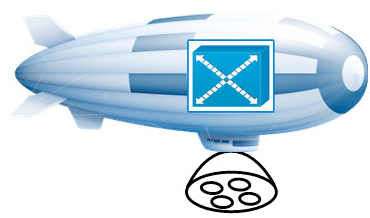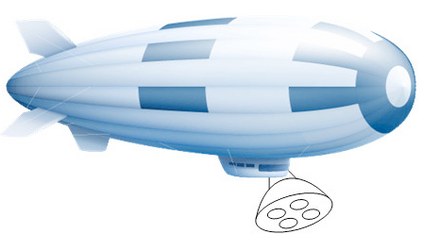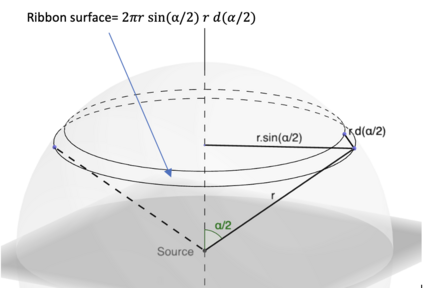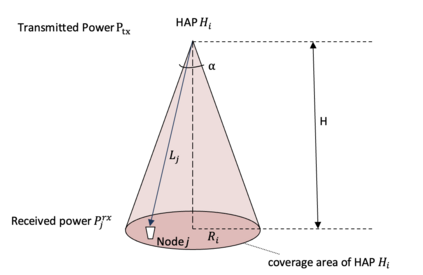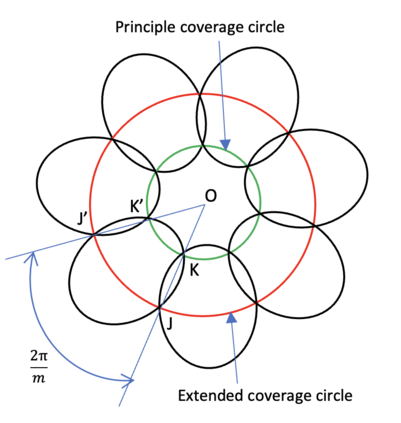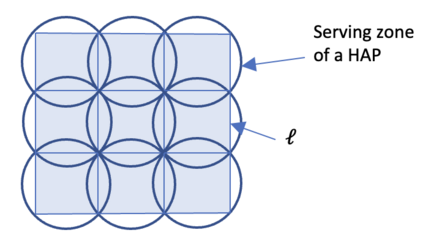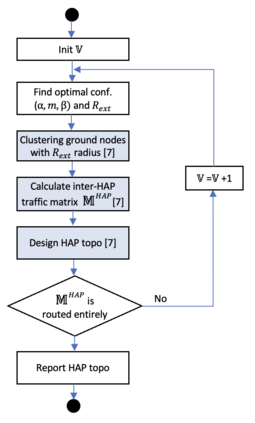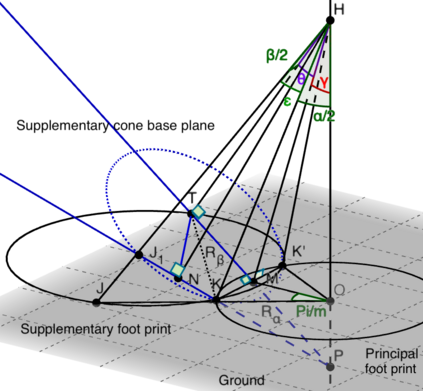Free-space optical (FSO) communication requires light of sight (LoS) between the transmitter and the receiver. For long-distance communication, many research projects have been conducted towards using a network composed of high-altitude platforms (HAPs) flying at an elevation of 20 km to carry intermediate FSO transceivers that forward data between ground stations. The clear environment at high elevations prevents terrestrial obstacles from cutting the LoS between the transceivers. An FSO transceiver on a HAP can communicate with ground stations within a small area owing to its limited beam size. We suggest using multiple FSO transceivers on a HAP to extend its ground coverage. However, the use of too many FSO transceivers may quickly exhaust the onboard energy of the HAP. As a result, HAP must be lowered to recharge frequently. In this study, we first propose a configuration of multiple FSO transceivers to widen the ground coverage of a HAP. We then propose a set of closed-form expressions to calculate the extended coverage. Finally, to implement a HAP network using multiple FSO transceivers, we seek the optimal configuration of multiple FSO transceivers that minimizes the total cost of the HAP network, including amortization, energy, and maintenance costs. The simulation results show that the proposed multiple FSO transceiver configuration clearly increases the ground coverage of a HAP and significantly reduces the cost of the HAP network.
翻译:自由空间光学(FSO)通信要求发报机和接收器之间的视线光线(LOS)通信。对于远程通信,已经开展了许多研究项目,以便使用由高空平台组成的网络,在20公里高空上飞行,以携带地面站之间转发数据的中层FSO收发器。高空的明显环境防止地面障碍,无法切断收发器之间的收发器之间的收发器。HAP上的FSO收发器可以与小区域内的地面站进行通信,因为其光谱范围有限。我们建议使用多个高空平台来扩大其地面覆盖。然而,使用太多的FSO收发报机可能会迅速耗尽HAP的机载能量。因此,HAP必须经常降低到充电量。我们首先提议一个多层的FSO收发报器配置,以扩大HAP的地面覆盖范围。我们随后提出一套封闭式表达式表达方式来计算扩大的覆盖范围。最后,我们建议使用多个高空系统传输器网络的多功能最小化网络,并大幅降低HSO转载器的成本。

